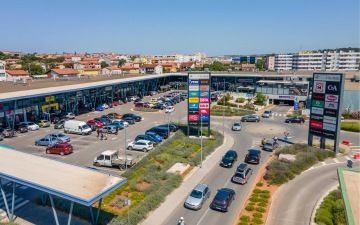Retail Parks as an Investment Opportunity in 2024

In late September, we hosted a presentation event in Singapore to explore retail parks as an investment opportunity within a broader macroeconomic context. The purpose of this article is to summarize the key points from the presentation for those who could not attend
The ZDR Master Fund is a sector-specific real estate fund that focuses on grocery-anchored retail parks — a shopping format that is well-known across Europe and, in the form of strip malls, also in the US and Australia. However, retail parks remain relatively unfamiliar in Singapore. The reason is clear: Europe, being around 70 times less densely populated than Singapore, allows for horizontal construction rather than vertical. This results in lower operational expenses and consequently lower rents for tenants. Additionally, the single-floor design without shared spaces facilitates quicker shopping trips, making retail parks highly attractive to time-conscious customers.
Retail parks are not just popular among shoppers; they also represent a compelling investment asset. With a focus on essential goods such as groceries and daily necessities, retail parks have shown remarkable resilience during uncertain market conditions — be it the COVID-19 pandemic or challenging phases of the economic cycle.
Macroeconomic Context
This historical perspective is valuable, but what does the current economic outlook suggest for commercial real estate, particularly retail parks, in Europe?
Inflation in the Eurozone continues to decline, reaching 1.7% in September 2024, down from 2.2% in August, after peaking at 10.6% in October 2022. This significant drop, largely driven by falling energy prices, reflects a recovering economy and cooling inflation.
In response, the European Central Bank (ECB) has taken steps to ease monetary pressure. Its recent rate cuts reflect optimism about the economic outlook. With inflation slowing and growth showing signs of deceleration, the ECB has already reduced rates in September and is expected to cut rates at least two more times, potentially bringing them to just above 3%.
Additionally, EU GDP is projected to grow in 2024 and 2025, creating a promising macroeconomic backdrop for real estate investments, including retail parks.
Is This the Ideal Entry Point?
Beyond macroeconomic trends, retail parks continue to show strong potential as an investment opportunity. The Central and Eastern European (CEE) commercial real estate market is expected to recover to pre-COVID activity levels by 2025, with the industrial and retail sectors leading this resurgence.
Further evidence of the sector’s strength comes from the Pan-European Commercial Property Price Index (CPPI), which suggests the market has likely bottomed out and is now fairly valued. This presents an ideal entry point for investors, as the sector shows increasing transaction activity and strong buyer-seller alignment.
Moreover, European real estate companies have outperformed the EUROSTOXX50 stock market index over the past year, underscoring the robust performance of this asset class.
Retail parks have evolved from a convenient shopping format into a resilient and attractive investment opportunity. With improving macroeconomic conditions, promising forecasts for the CEE market, and a stabilizing real estate sector, 2024 appears to be a pivotal year for retail park investments.